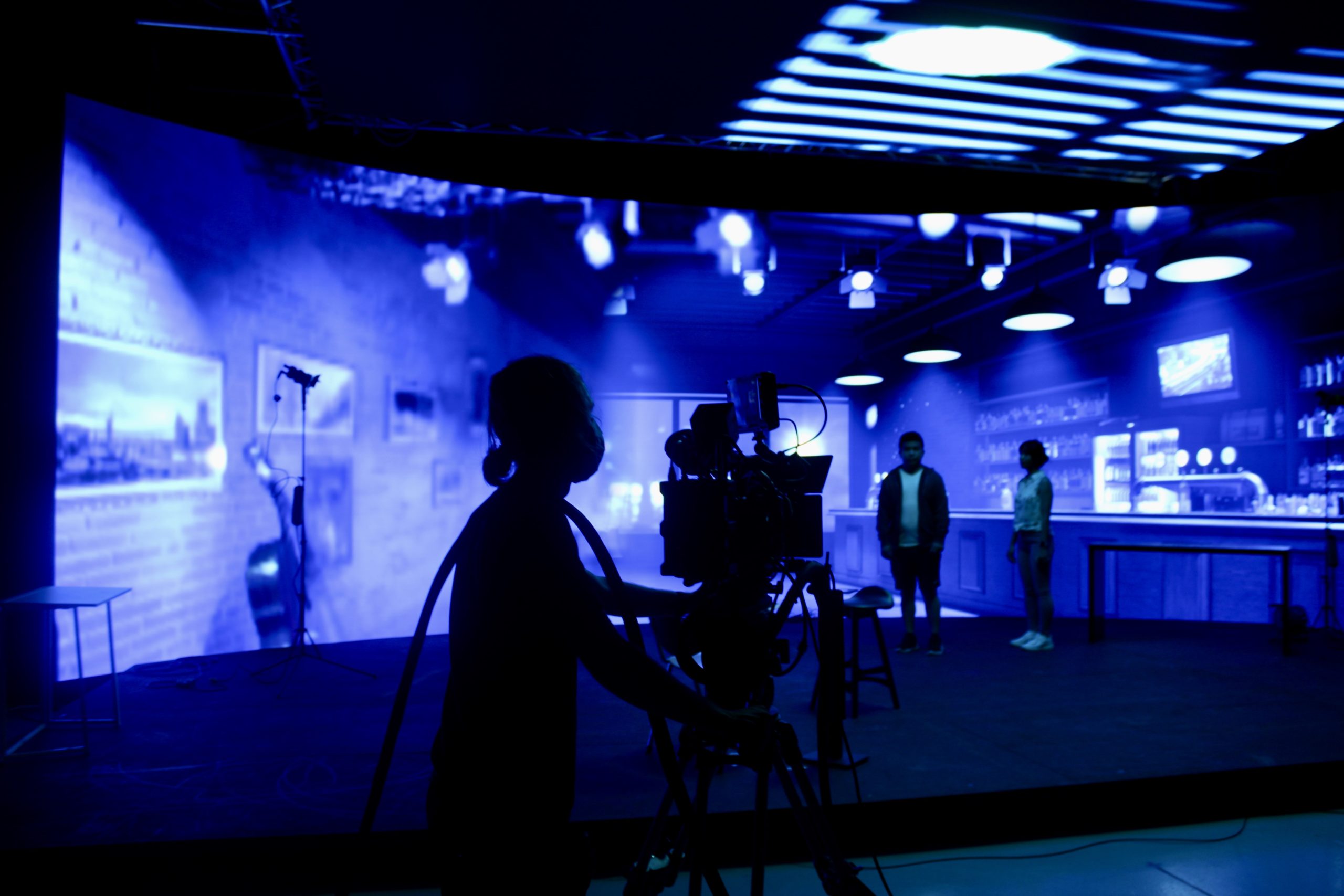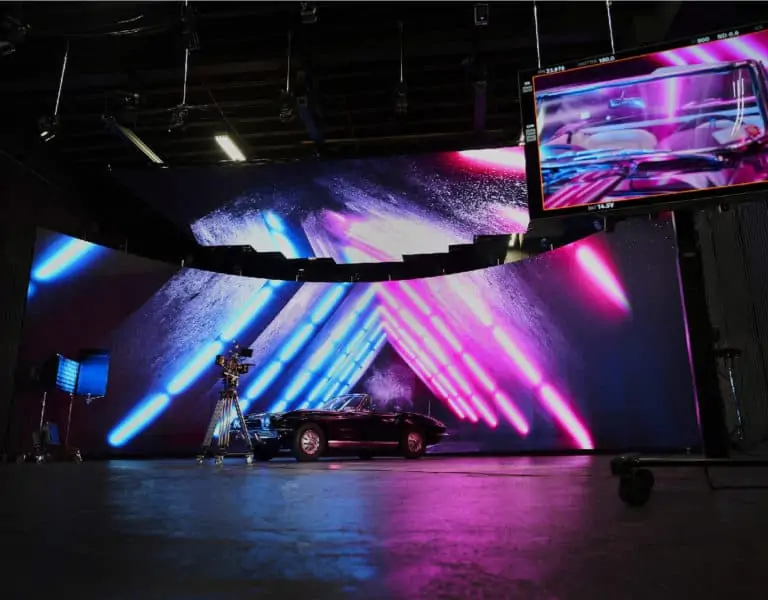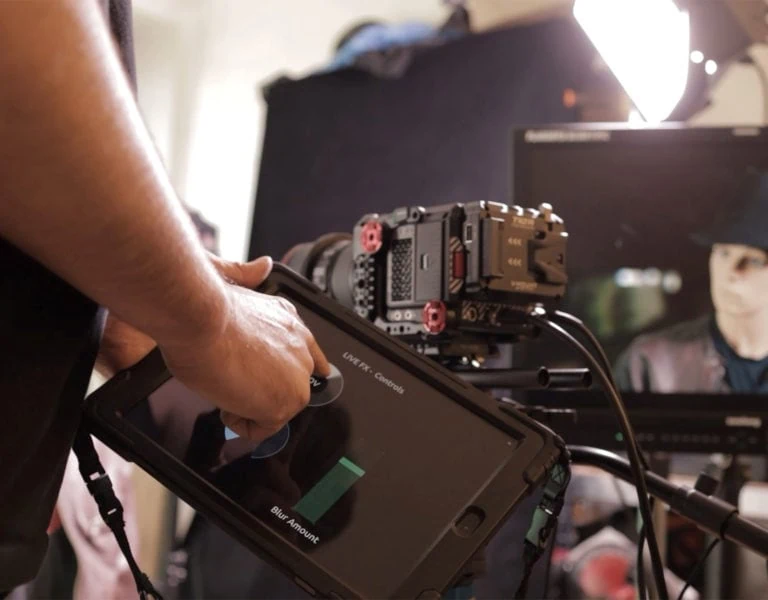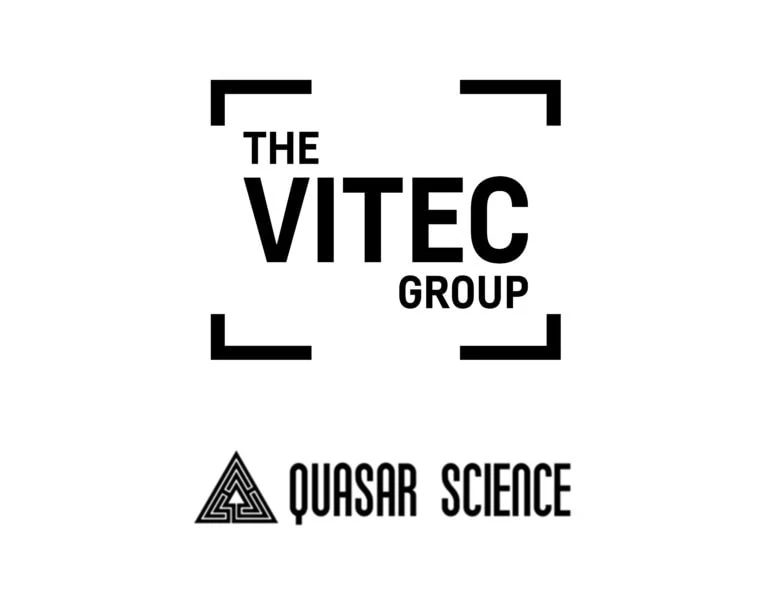Brompton Technology processing helps LED screens become a collaborative partner for in-camera VFX
Apr 19, 2022
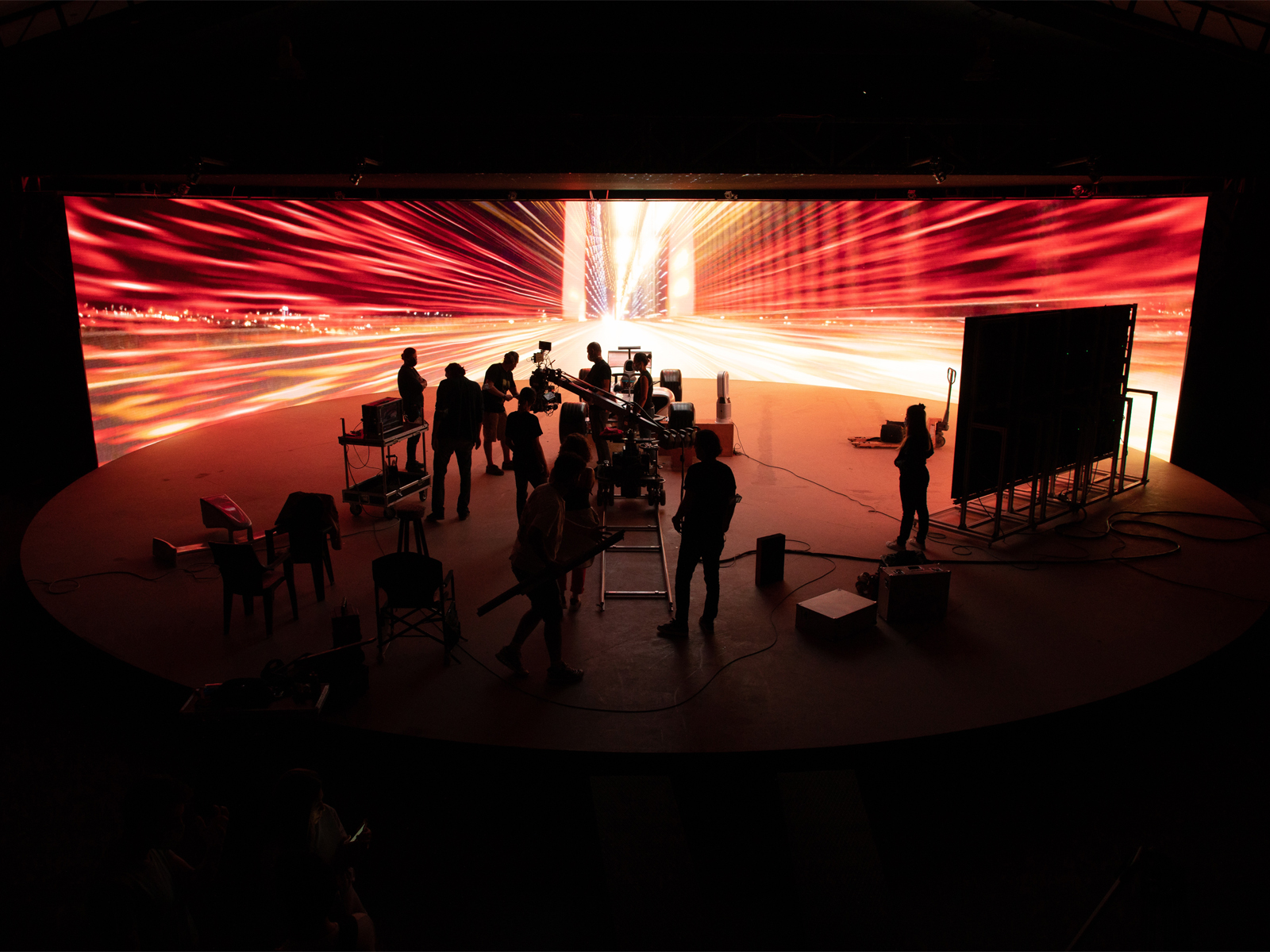
This is a sponsored article, created in partnership with Brompton Technology.
In-camera visual effects using LED screens has rapidly moved from a pioneering specialty to a mainstream technique being widely used across film and television production.
The fundamental idea is to do your visual effects “in camera” by filming the action against a display showing the background scene, rather than using green screen and adding the background in post. This is not new, but the latest fine-pitch LED has significant advantages over other display technologies and can create flexible LED volumes that typically also include ceiling and wrap-around elements to provide realistic lighting and reflections. Large volumes for virtual production are now being built all over the world and kept busy producing major motion pictures, commercials, and iconic sci-fi and fantasy series like the latest, highly-anticipated series of Emmy-winning Star Trek: Discovery. Recently premiered on Paramount+, it was shot on Pixomondo’s flagship virtual production stage in Toronto, Canada. The smart money is clearly betting this is how much of our film and television content will be created in the future.
Early adopters working with LED screens didn’t always have a smooth ride. LED screens that were not designed with use on camera in mind can turn out to be unsuitable, and the wrong LED solution or the wrong pairing of screen and camera causes more problems than it solves. Even when working well, the LED screen was often a fixed point that every other department had to adapt around. But, despite those challenges, the technology’s multiple advantages mean the market for LED in virtual production has grown rapidly. and manufacturers are responding with specifically tailored products.
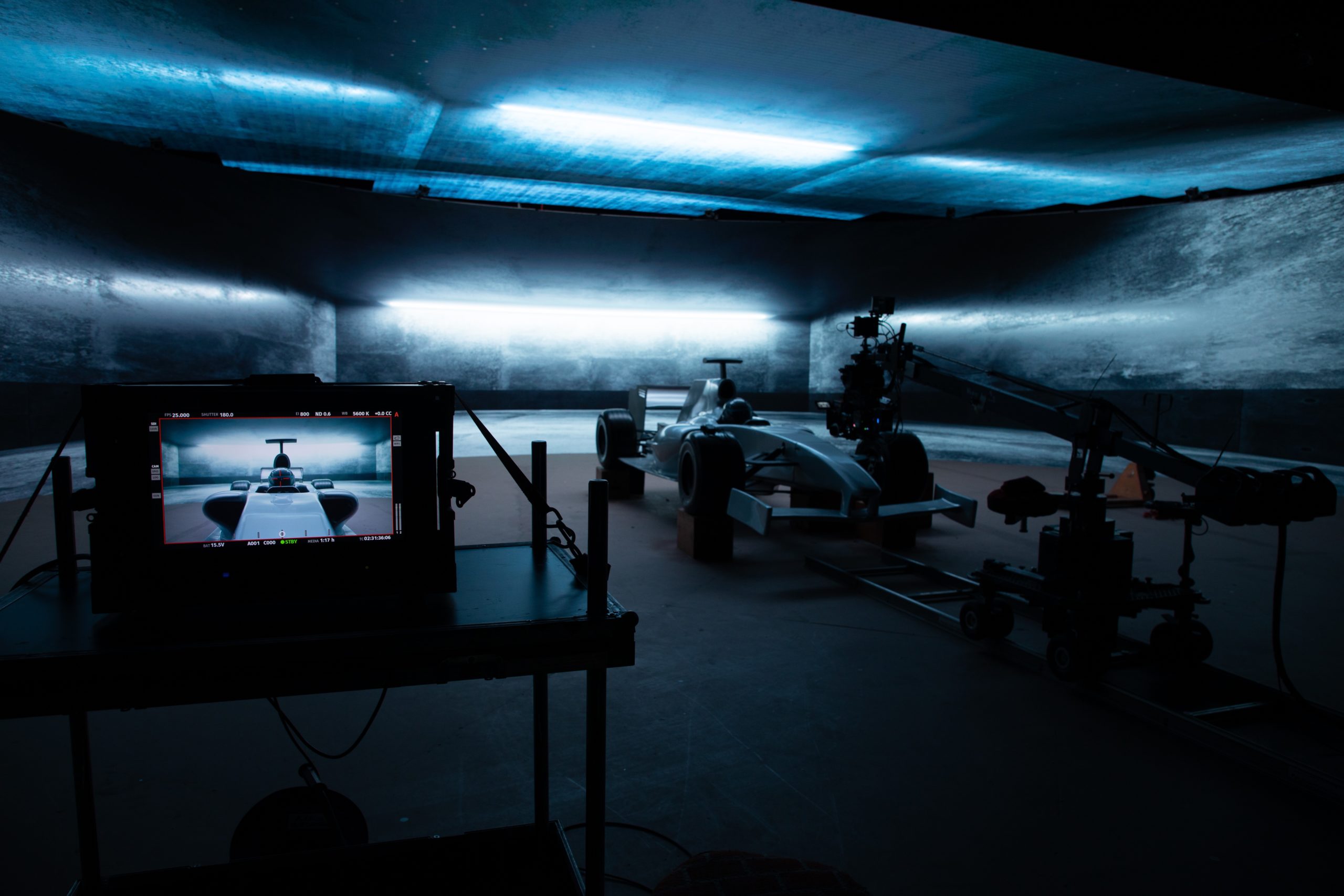
An LED screen comprises many individual LED panels, and key performance characteristics are pixel pitch, maximum brightness and achievable colour gamut. But of equal importance are the capabilities of the processing system driving the screen. LED video processing is the catch-all term for everything that happens between receiving source video and the actual LED driver chips within an LED panel. It typically consists of a processor that receives the video signal, does any necessary formatting and adjustments, splits the image into chunks that map to each individual LED panel and distributes that data to the panels – most commonly over Gigabit Ethernet. A receiver card in each panel converts the video data into linear light control signals for the LED drivers.
Video processing is sometimes overlooked as just the mapping function of the LED panel, but in reality there are many technical challenges in ensuring perfect synchronisation, achieving the lowest possible latency, correcting for the many non-ideal behaviours of LEDs and LED drivers, and managing the trade-offs that arise from trying to squeeze the maximum performance out of an LED panel. The right processing is just as important as the choice of LED panel itself, and if you don’t know what processing is inside an LED panel, you can’t know what behaviour to expect.
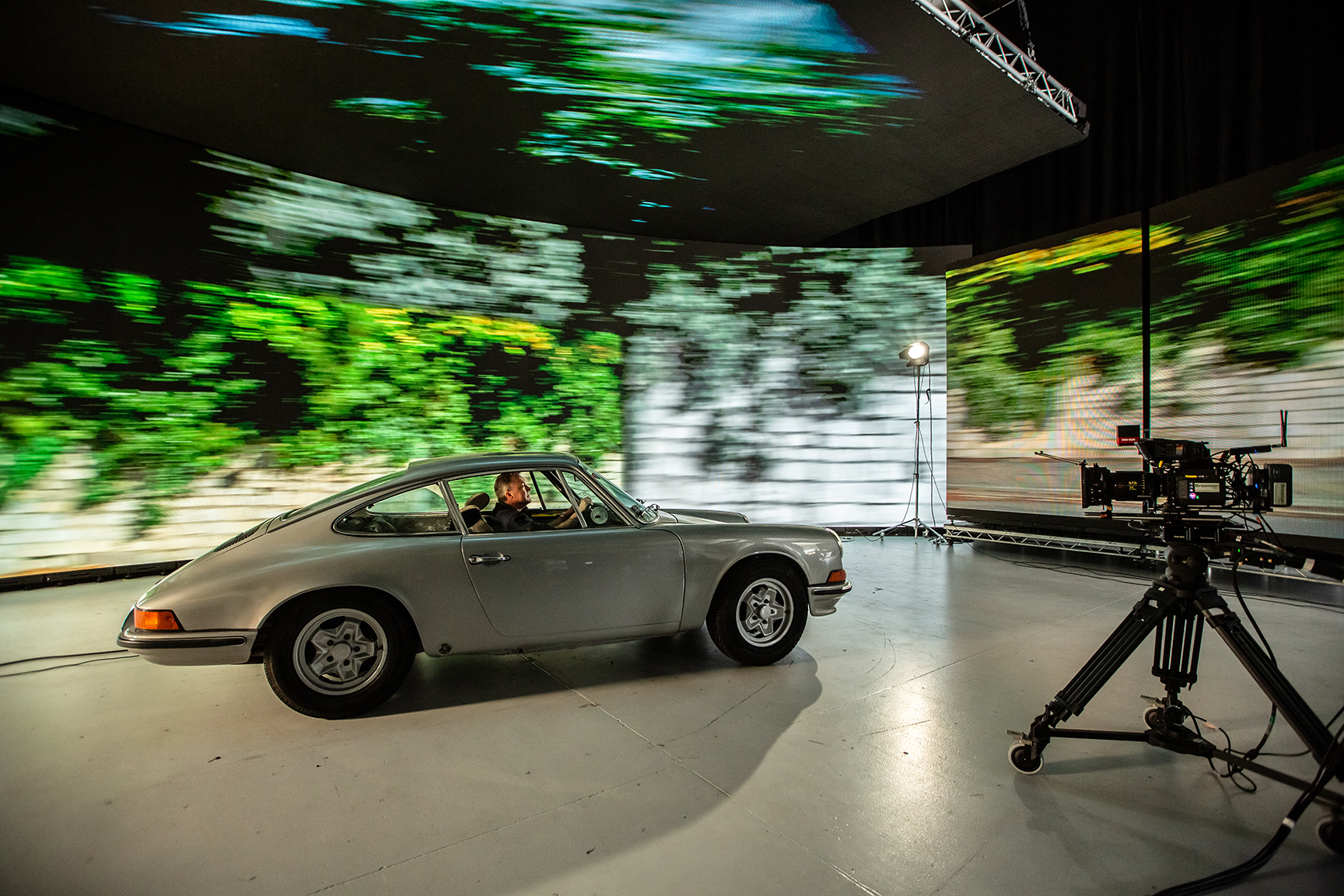
Brompton Technology is the established leader in LED video processing for virtual production, and has been working hard to ensure LED screens become a collaborative partner in the creative process, rather than an obstacle to work around. This is an ongoing process of working with users to understand the pain points – then developing new features or integrating with complementary technologies to create more streamlined workflows for virtual production.
For example, creatives are used to being able to adjust their shutter angle to achieve a particular creative effect or manage motion blur. But with an LED screen in the mix, they have often been restricted to selecting a specific shutter angle to avoid visual artefacts. Brompton introduced ShutterSync®, a feature that allows the refresh timing of the LED screen to be adjusted to match the chosen shutter angle of the camera – putting creative control back in the hands of the user.
Similarly, LED screens can vary wildly in their achievable colour gamut and accuracy of colour reproduction. Brompton is a pioneer of Dynamic Calibration, a technology for LED that ensures accurate reproduction of colours within the gamut and intelligent management of out-of-gamut colours. Dynamic Calibration also underpins Brompton’s implementation of HDR video, an increasing requirement for virtual production –partly due to the ability to encode absolute colour and brightness information into HDR content, which can then be faithfully reproduced on the LED screen.
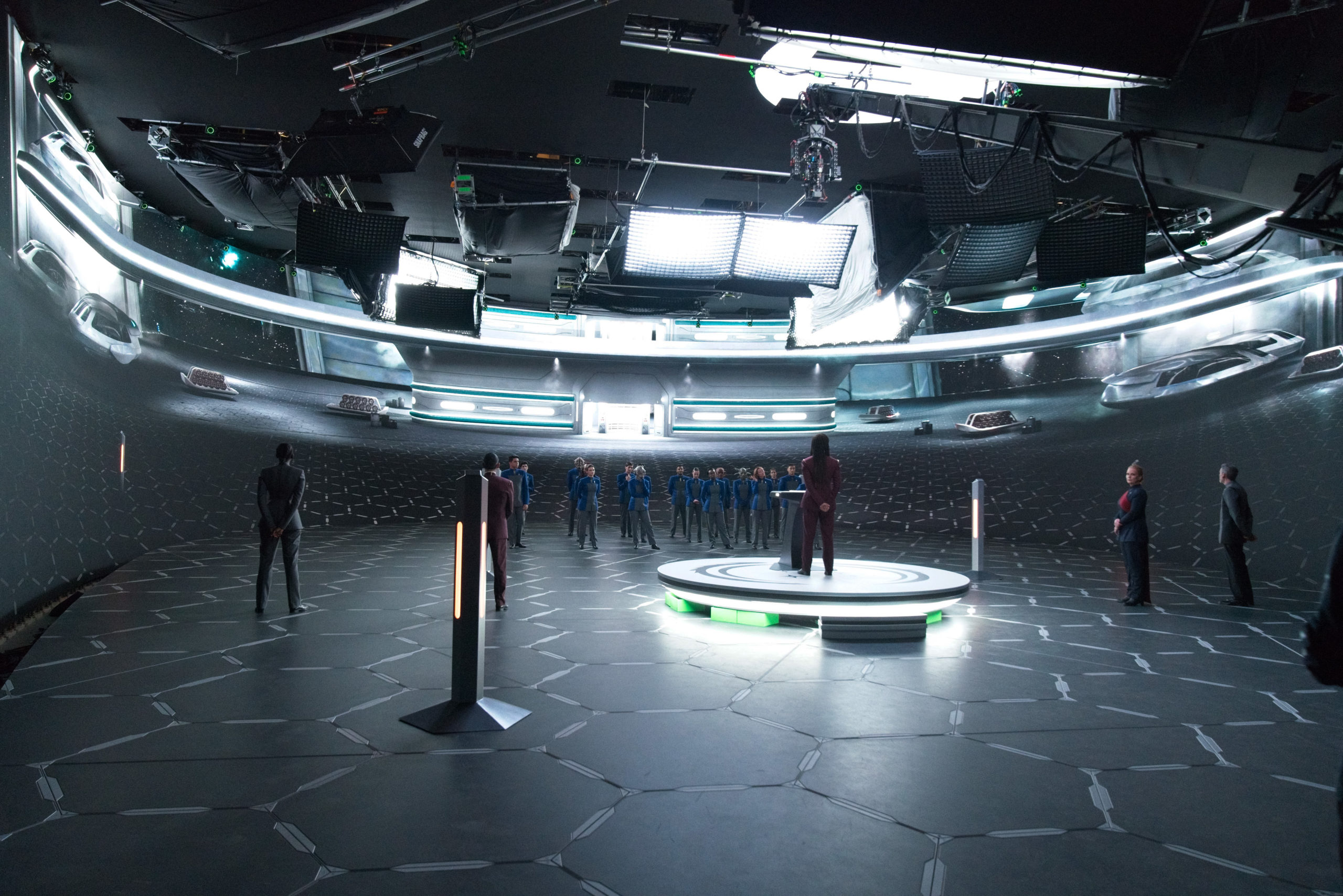
Where custom colour management or on-set grading is required, Brompton’s Tessera processors support import of 3D LUTs (Look Up Tables) in industry-standard .cube formats. Management of 3D LUTs is now integrated into leading tools from both Pomfort and Assimilate, so Digital Imaging Technicians can grade an LED screen in the same way they would manage any other monitor.
There are now even workflows available to support multi-camera virtual production shoots using LED screens. These rely upon Brompton’s Frame Remapping technology, which allows multiple different content streams to be interleaved so a frame from each stream is shown in turn. Each camera can run at a different genlock phase offset, so they each see their own unique content on the one screen. The typical application in virtual production is to allow different camera positions to see a background with the correct perspective.
The last 24 months have seen rapid, widespread adoption of virtual production using LED, and equally rapid advances in the technology available to make the LED screen a full partner in the creative process for film and broadcast production. From smaller LED setups to larger volumes like those used on major series such as The Mandalorian, LED screens can deliver new possibilities to teams of all sizes and are now an established part of the landscape for film and television production.
This is a sponsored article, created in partnership with Brompton Technology.
